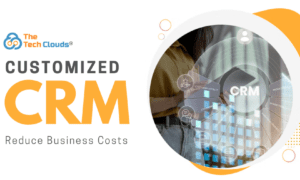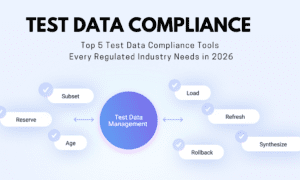Facing obstacles when trying to secure equipment financing because of poor credit?
Your business can acquire essential equipment despite having bad credit. The expansion of the finance market provides new possibilities for companies that encounter credit obstacles.
Businesses that have credit scores around the 500s still stand a chance to secure equipment financing. There are lenders who focus on businesses with credit problems and they provide practical solutions for acquiring necessary equipment.
The article offers a detailed guide on improving your chances of approval while securing necessary equipment financing despite having bad credit.
What You’ll Discover
- Understanding Equipment Financing With Bad Credit
- Why Equipment Loans Are Easier to Get With Bad Credit
- 5 Tips to Improve Your Equipment Financing Approval Odds
- Alternative Financing Options for Bad Credit Businesses
- How to Compare Equipment Financing Offers
Understanding Equipment Financing With Bad Credit
Bad credit equipment financing refers to funding solutions specially created for business owners who possess poor credit records.
Traditional banks and lenders could deny your application if your credit score falls below 650 and you need to buy essential equipment. That’s where specialized equipment financing comes in.
In today’s market, businesses actively looking to look for heavy equipment financing solutions have more options than ever before. Industry professionals recognize that credit scores do not provide complete information about your business’s potential or trustworthiness.
The prevalence of credit challenges proves that you share these struggles with many others. This information outlines how businesses with poor credit ratings can access equipment financing.
- Equipment financing uses the equipment as collateral to lower the lender’s risk exposure.
- Customers with bad credit can expect their interest rates to range from 5.99% to 18%.
- Equipment loans for individuals with bad credit usually offer shorter repayment durations.
- When you take out an equipment loan with bad credit, you may be required to make an upfront payment between 10% and 30%.
Equipment financing continues to stand as a top funding choice for businesses struggling with credit challenges.
Why Equipment Loans Are Easier to Get With Bad Credit
You may question the reason equipment loans remain available for businesses with poor credit histories when other financing options prove difficult to secure.
Risk is the only factor that matters in this case.
Equipment loans require the equipment you buy as collateral for the loan. Should you fail to make payments, the lender has the right to take back the equipment to recover most of their investment. Built-in security measures make lenders more inclined to provide financial support to businesses that struggle with credit issues.
Many equipment lenders perform credit checks yet still finance businesses whose personal credit scores fall into the 500s. Equipment financing options sometimes require only a minimum credit score of 575 particularly when the loan is secured through the equipment itself.
Think about it this way:
- Lenders face high risk when providing a $50,000 unsecured business loan to borrowers with bad credit.
- The $50,000 equipment loan represents less risk for lenders since the equipment itself acts as collateral.
Business owners who need equipment but face credit challenges should feel hopeful because of this development. The equipment serves as a financial guarantee that helps lenders feel more secure about providing financing to those who have experienced previous credit difficulties.
5 Tips to Improve Your Equipment Financing Approval Odds
If you want better odds of securing equipment financing approval you should consider the following strategies. The following five powerful strategies will give you the advantage when seeking financing.
1. Choose the Right Equipment
Lenders prefer equipment that:
- Holds its value well
- Has a strong resale market
- Is essential to your business operations
Standard construction equipment like excavators or bulldozers commonly receive approval for financing before custom-built machinery which possesses minimal second-hand market value.
2. Prepare a Strong Business Case
Develop a persuasive business case that demonstrates:
- How the equipment will generate revenue
- Your business’s current financial health
- Cash flow projections demonstrate your capability to fulfill payment obligations.
Beacon Funding reported that 80% of Americans worked on credit score improvement by November 2023. Your application needs to stand out through a compelling business case statement.
3. Offer a Larger Down Payment
A larger down payment:
- Reduces the lender’s risk exposure
- Shows your commitment to the purchase
- May help you secure better interest rates
Offering a down payment between 25% and 30% significantly enhances your chances of approval for equipment financing even with bad credit despite the common requirement of only 10-20% down.
4. Focus on Business Revenue
Credit scores alone do not give lenders a complete picture of an applicant’s financial health. Many will consider:
- Monthly revenue
- Years in business
- Industry stability
A survey of nearly 600 companies revealed that over 40% intend to expand their equipment purchases during the next year. The availability of equipment financing indicates lenders’ willingness to fund purchases provided businesses demonstrate their ability to repay the loan.
5. Consider Seller Financing
Equipment dealers and manufacturers often:
- Have their own financing programs
- May be more flexible on credit requirements
- Want to make the sale happen
Businesses that have bad credit can benefit from this option because sellers are motivated to ensure the transaction is completed.
Alternative Financing Options for Bad Credit Businesses
What should you do if traditional equipment financing fails to work? Here are some alternatives to consider:
Equipment Leasing
With equipment leasing:
- Retaining ownership of the equipment reduces potential risks for lenders.
- The monthly payments for equipment leasing tend to be less than loan payments.
- Many leases include maintenance and upgrades
Industry data indicates that equipment leasing interest rates for businesses with credit problems span between 5.99% and 18% along with more lenient approval requirements.
Invoice Financing
Invoice financing allows you to:
- Get immediate cash for unpaid invoices
- Use the funds for equipment purchases
- Bypass traditional credit checks
Businesses with poor credit can benefit from this option when their customers are reliable but slow to settle invoices.
Equipment Rental
Renting equipment instead of financing is often the best option until you can improve your credit score.
Equipment rental provides:
- No long-term financial commitment
- Immediate access to needed machinery
- No impact on your credit score
The stopgap solution works well as you focus on rebuilding your credit for subsequent purchases.
How to Compare Equipment Financing Offers
What criteria should you use to select the ideal approval offer when you receive multiple options? Here’s what to consider:
Total Cost vs. Interest Rate
Your total cost depends on more than just the interest rate. Also consider:
- Origination fees
- Documentation fees
- Prepayment penalties
- Late payment fees
Sometimes a loan with a marginally higher interest rate but no fees ends up costing less than a loan that has a lower rate but includes many fees.
Repayment Terms and Flexibility
Look for:
- Monthly payment amounts
- Length of repayment term
- Payment flexibility during slow seasons
- Early payoff options
Financing equipment that matches your business’s cash flow patterns results in better management.
Bringing It All Together
It takes some extra effort to secure equipment financing when you have bad credit but you can still achieve it. The fundamental insight needed here is that lenders focus first and foremost on the potential risks involved.
Remember:
- The possibility of obtaining equipment financing increases when the equipment itself functions as collateral.
- The industry continues to expand quickly with the goal of reaching $1.5 trillion in size
- Business owners can surpass credit challenges by making substantial down payments with solid business plans.
- Leasing presents practical opportunities for businesses to acquire necessary equipment.
Through proper implementation of these strategies you can boost your ability to secure necessary equipment financing no matter your credit status.
Access to equipment financing remains possible through proper methods even for those with poor credit records.



































